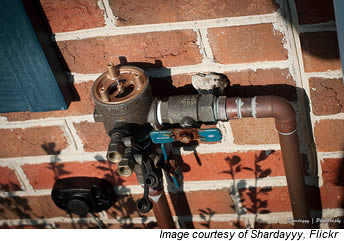 Performing a backflow test and submitting those results to the appropriate regulating authority is typically a process fraught with paperwork. You have to schedule the test, perform the test and document the results, and then send them to the regulating authority. It can be a mess of paperwork that takes hours to complete, paperwork that can prevent you from getting paid for days – or even weeks.
Performing a backflow test and submitting those results to the appropriate regulating authority is typically a process fraught with paperwork. You have to schedule the test, perform the test and document the results, and then send them to the regulating authority. It can be a mess of paperwork that takes hours to complete, paperwork that can prevent you from getting paid for days – or even weeks.
But it doesn’t have to be. Backflow testing software can help you electronically schedule, route, collect data in the field, transmit the test results and ultimately bill your customer – the same day! Let’s be honest, though, buying technology can be quite daunting. There are so many options out there today that it can be hard to be sure you are getting the perfect fit for your company whether it be when buying a device, an accounting solution or backflow testing software.
Backflow testing software may be one of the hardest software solutions to buy because you need to make sure it can handle all of the specialized data you need to appease both your company, and whoever needs to receive the test results.
To help you get a head start on what to look for when purchasing backflow testing software, below are 4 things that should definitely be a part of your new backflow testing software:
- Scheduling and Customer Data Management
If you’re conducting multiple backflow tests per day, you’ll want software to help simplify the scheduling process. Make sure the software you’re using can also store customer data so you can input the location of the backflow preventer in the system once, and refer to it every time you return to the site. Also, look for software that stores a complete customer history so you can quickly see when and what was done on each job. The ability to store customer notes is also important, so your testers can access any security system passcodes or simply see that there is a dog in the backyard so they won’t leave the gate open. - Mobile Applications and Field Data Collection
Eliminating paperwork starts in the field. Make sure the mobile field service software you buy has an application that works on tablets, smartphones or netbooks. With the abundance of inexpensive Android tablets on the market, they’ve become the smart choice. Also make sure the software you select can support custom “surveys” that can be completed in the field. That way, your testers can quickly input the data you need to collect using their tablet or other internet-enabled device. - Billing Integration
Don’t forget that you have to invoice customers. You want software that can sync your data to your accounting software so you can quickly invoice customers for the work you’ve performed. Billing integration can be a huge time saver and improve your cash flow significantly. - Reporting
Make sure your software can report in the manner required by the city or jurisdiction where you’ll be reporting results. If the city has odd reporting requirements, make sure your software can handle your custom reporting requirements before you select your software solution.
There are a lot more aspects you should look in to when searching for backflow testing software. Want more information on what you’re missing? Download HindSite’s Backflow Testing Software Buyer’s Guide.







